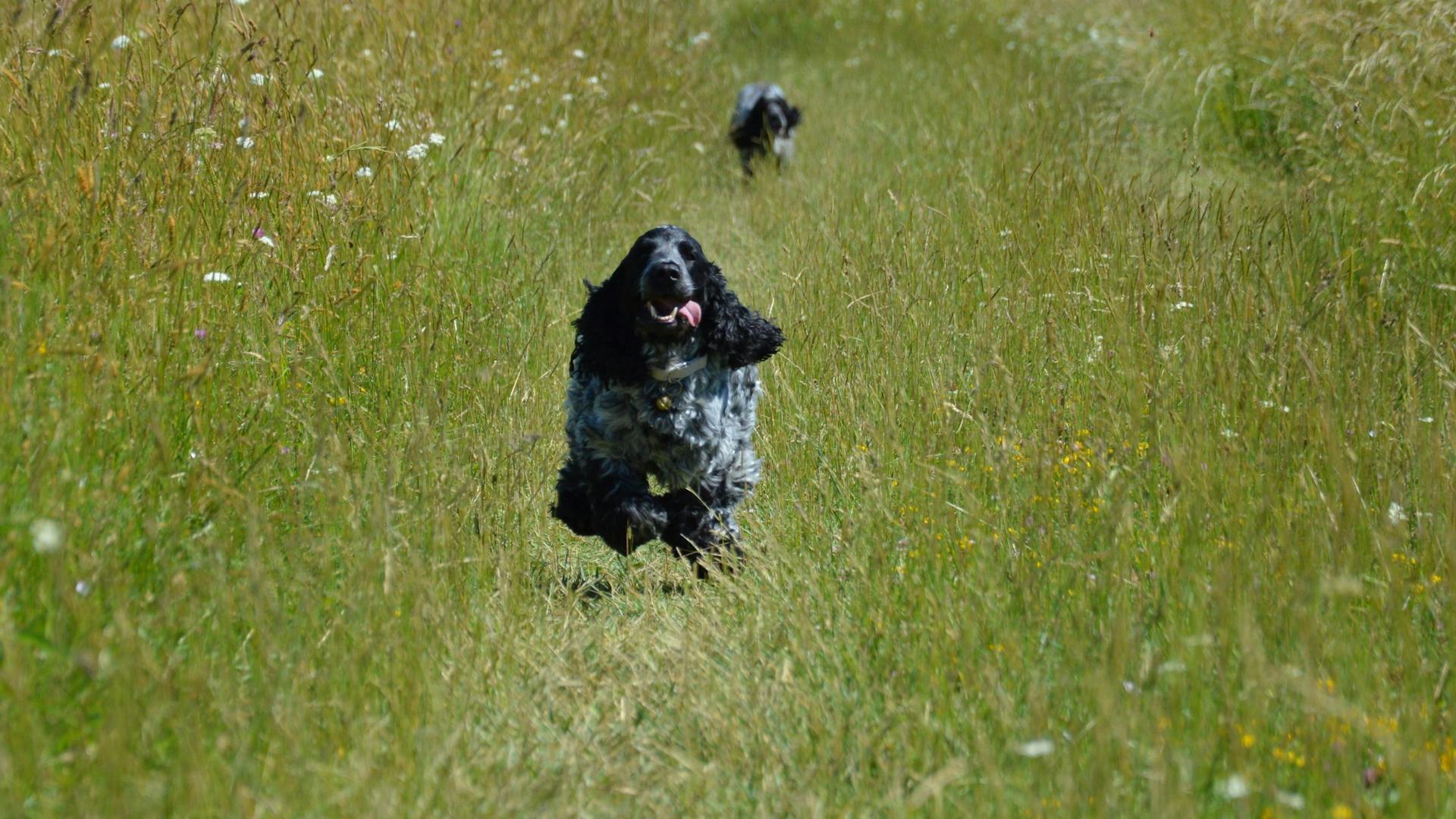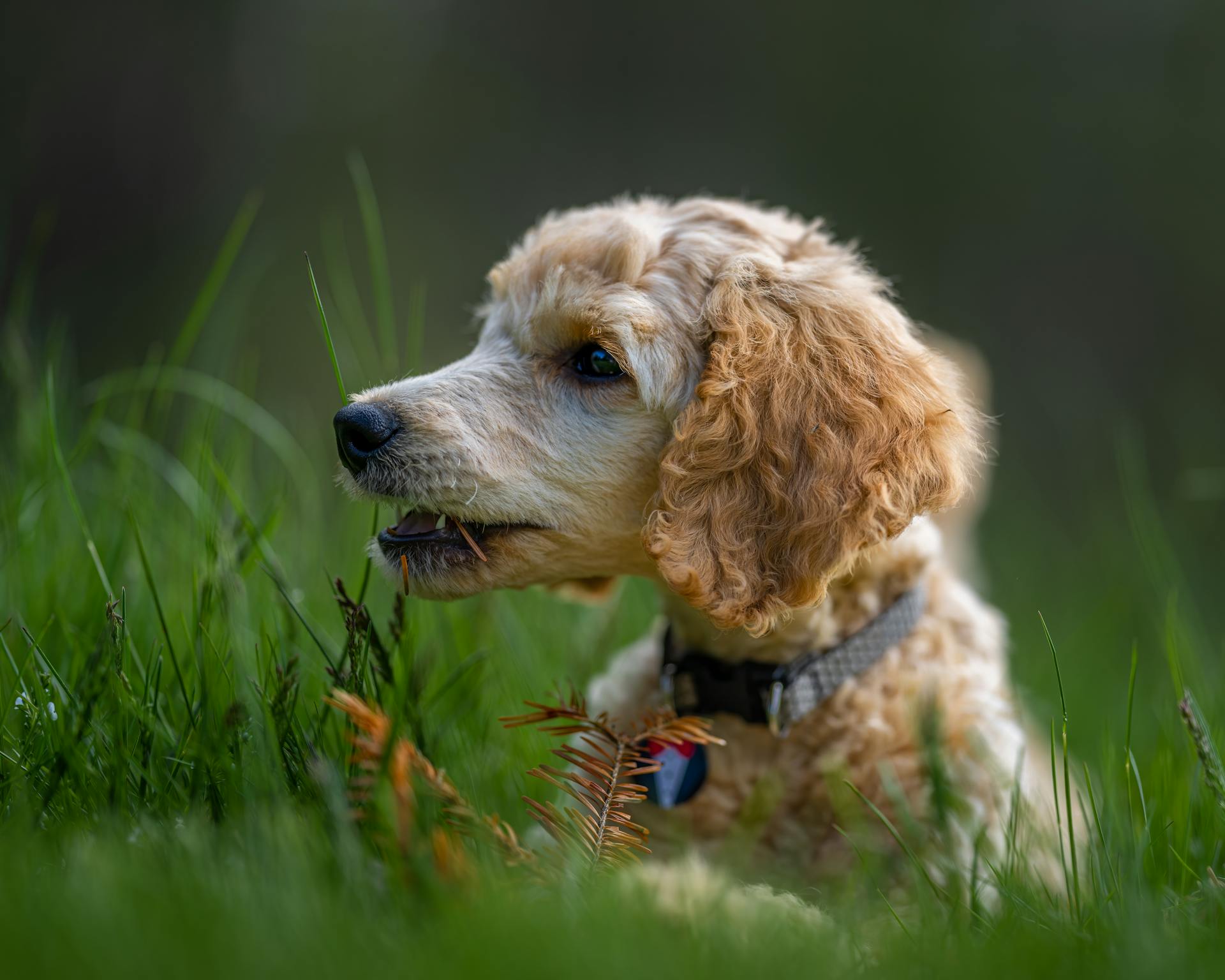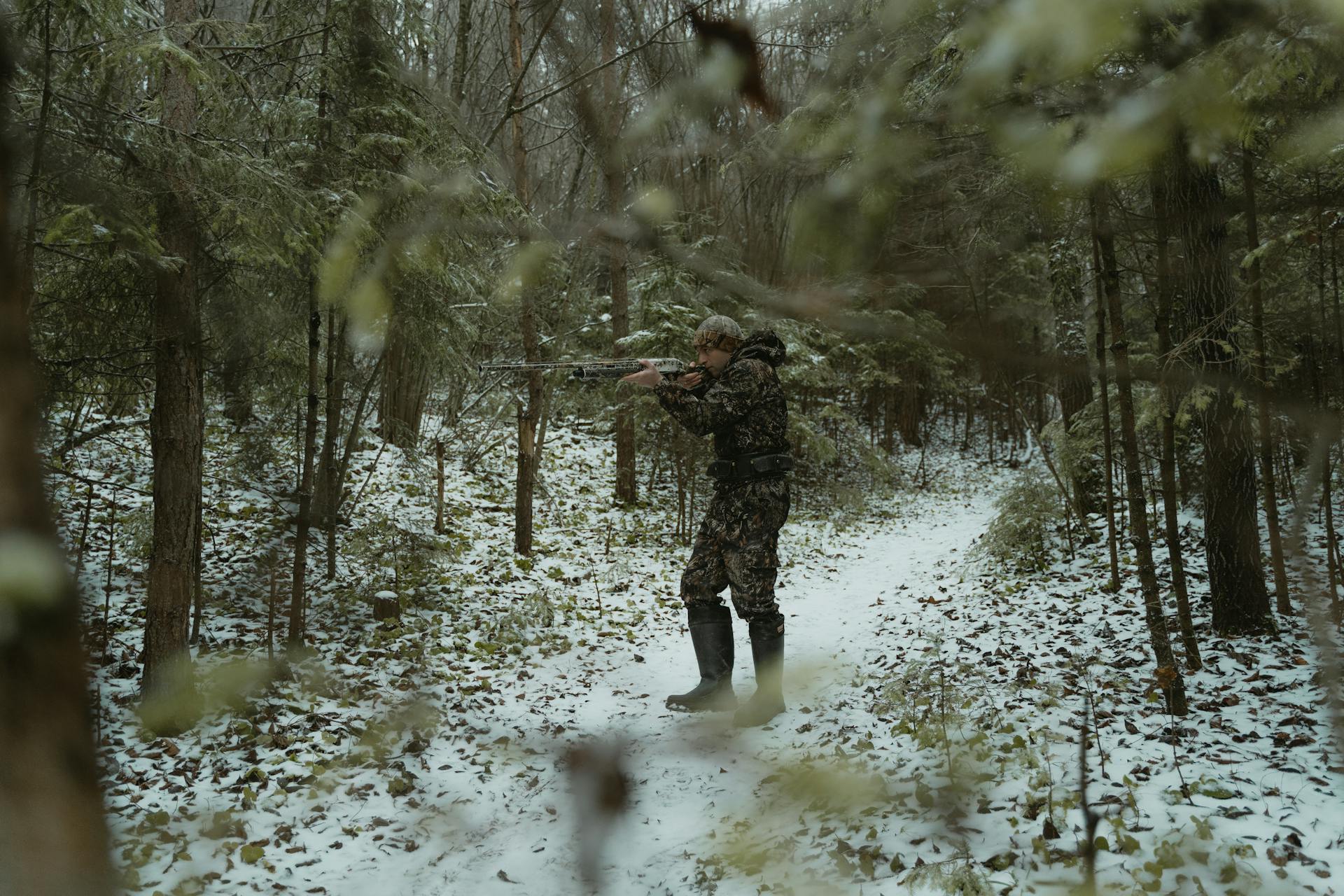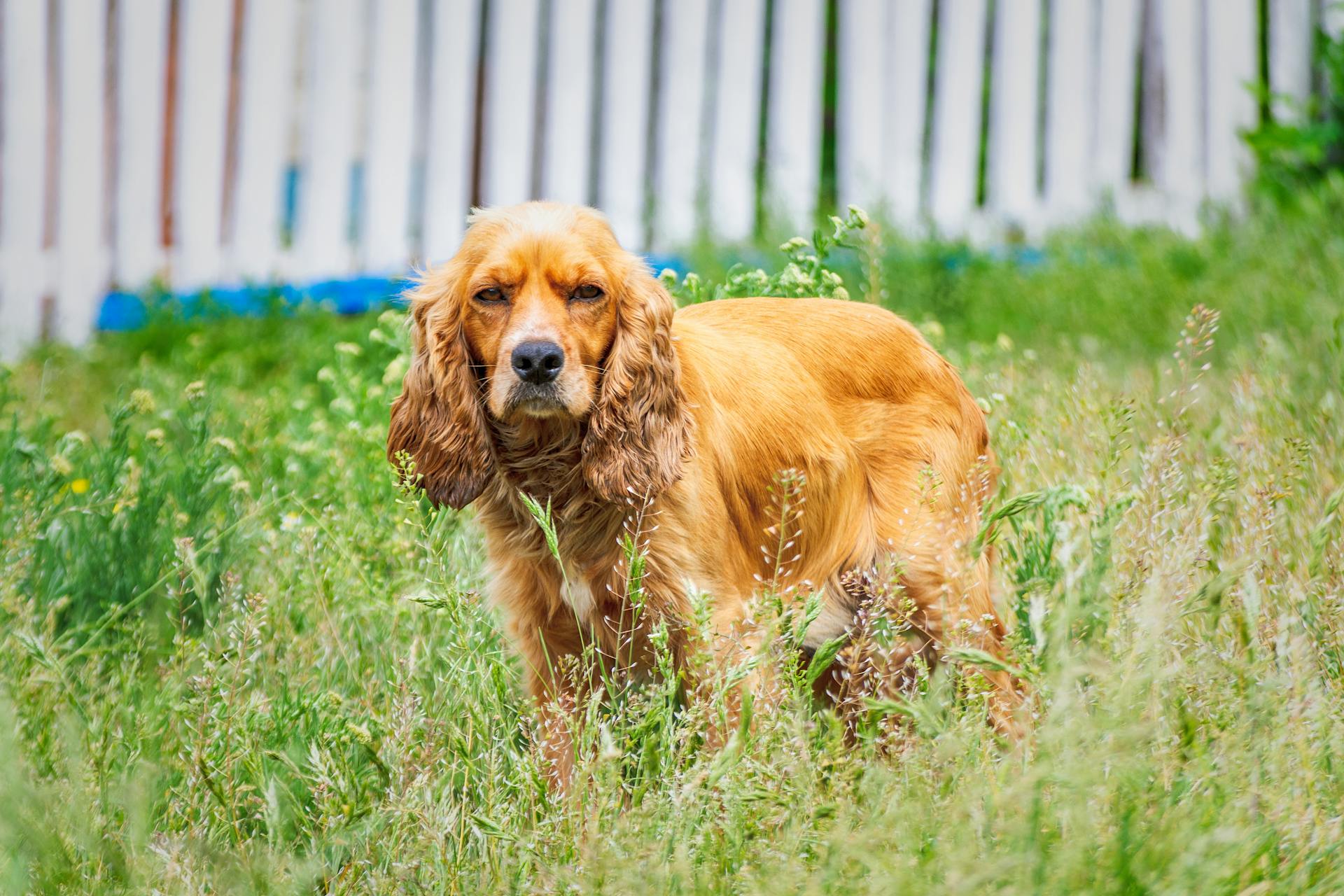
Cocker Spaniels are a beloved breed known for their gentle and affectionate nature, but did you know they come in a variety of colours?
The most common colours of Cocker Spaniels are black, blue roan, and golden.
Solid Colors
Solid colors are a beautiful aspect of Cocker Spaniel coat colors.
The most common solid color is golden, which ranges from a pale yellow to a deep golden hue.
A solid color dog can have white patches on its fur, like a white streak across the chest, and still be considered a solid color.
However, a solid color can carry the parti-color gene but not the other way around.
Breeding a parti-color Cocker Spaniel to a solid-colored one can only produce solid-colored puppies, all of which will be carriers for the parti-color gene.
This is because solid colors are a dominant gene.
Black is also a recognized and popular solid color in Cocker Spaniels, with a glossy, jet-black coat that can be either solid or occasionally have small white markings.
All solid-colored Cocker Spaniels, regardless of the color, can carry the parti-color gene, even if they don't display any white patches.
This means that if a solid-colored Cocker Spaniel is bred to a parti-colored one, some puppies will be solids, and some will be partis.
On a similar theme: American Water Spaniel Colors
Patterns
Roan patterns in Cocker Spaniels are created when one color is diluted with white hairs, making it appear lighter than it actually is.
A blue roan Cocker Spaniel doesn't have blue fur, but rather black fur with many white hairs mixed in, giving it a lighter appearance.
Chocolate roan Cocker Spaniels are actually liver-colored dogs with white hairs mixed in, resulting in a chocolate-like appearance.
Particolored Cocker Spaniels have a significant amount of white on their coats, making their fur two-toned with the primary color either being their base color or white.
No two particolored Cocker Spaniels have identical coats due to varying placement, size, and type of markings.
Their coat may look almost solid with just a few stray specks of another color.
Dogs with a large portion of white are considered particolored Cocker Spaniels, with their markings appearing in different shapes, sizes, and places.
Tan markings can occur on any coat color or pattern, and are usually seen over the eyes, muzzle, chest, legs, and under the tail.
The tan gene is recessive, and a puppy that is already tan must have inherited the trait from both parents.
Tan points can vary in color, but should be limited to 10% or less of the dog's body.
Worth a look: Husky Blowing Coat
Specific Colors
Golden Cocker Spaniels can range from a light golden colour to a very dark rusty shade. They're sometimes referred to as red Cocker Spaniels when their coats are darker.
Liver and white dogs are less common, with the liver being the recessive gene and white being the dominant gene. This color combination features white spots primarily on the nose, ears, mid-back, chest, and occasionally near the eyes.
A solid-colored Cocker Spaniel can carry the gene to create a particolored Cocker Spaniel, but a particolored dog cannot carry the gene to create a solid-colored Spaniel.
You might like: Liver English Cocker Spaniel
The Black
The Black Cocker Spaniel is a stunning breed with a glossy, jet-black coat that can range from a deep, matte black to a shiny patent leather sheen. This color is solid without any markings, although some black Cockers can have a small white patch on the chest, which is generally acceptable in show standards. Black Cocker Spaniels are particularly noticeable for their shiny fur that reflects light, giving them a majestic appearance.
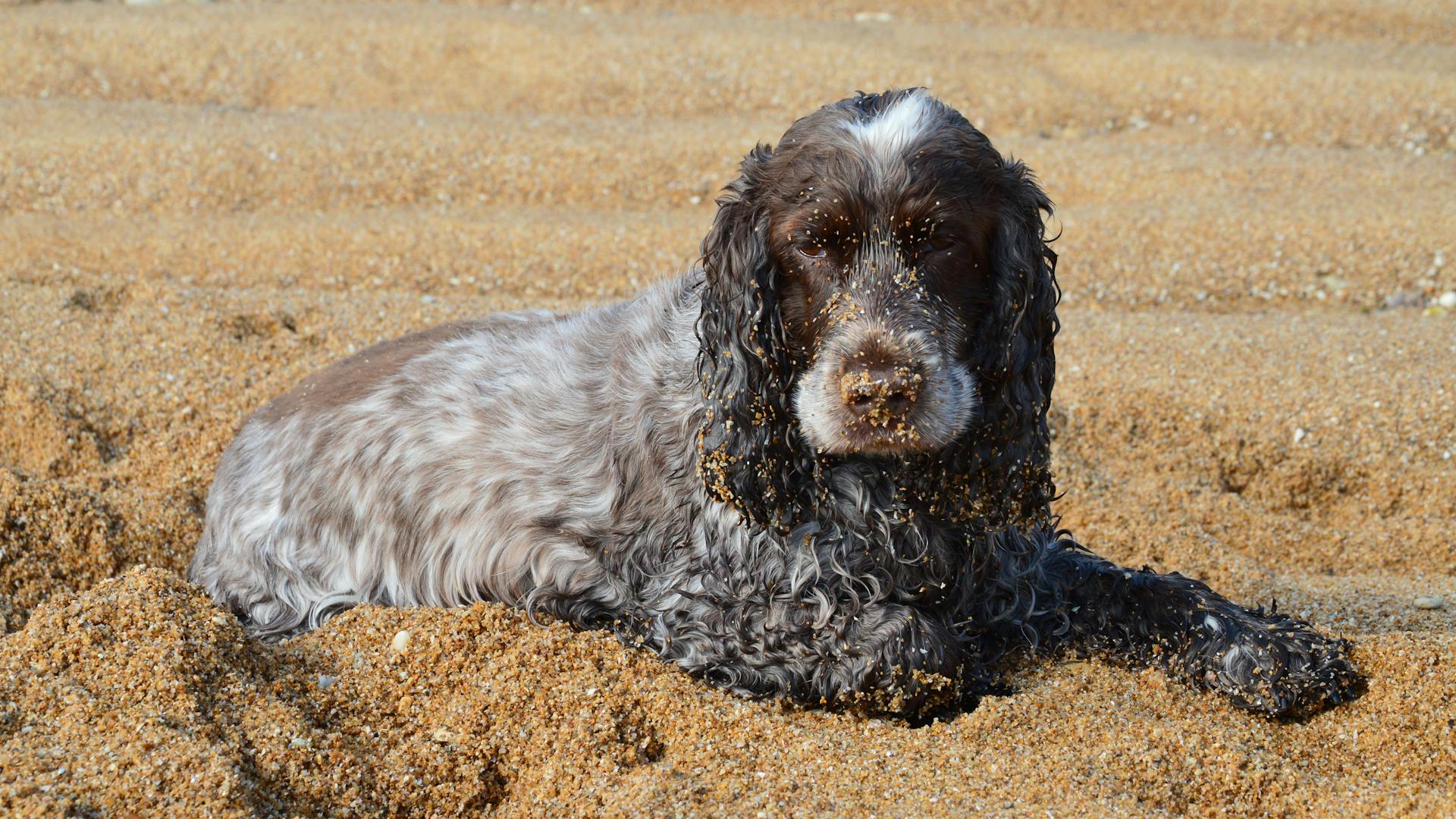
Their big, adorable eyes should be a deep brown or black color; any other eye color is considered a fault by the breed standard of all the major canine organizations. This means that if you're planning to show your black Cocker Spaniel, make sure their eye color meets the breed standard.
Grooming is crucial for maintaining the luster and health of the black coat, as it can show dander and dust more readily than lighter colors. Regular grooming will help keep their coat looking its best and prevent any potential health issues.
A unique perspective: Dog Blowing Coat in Winter
Particolored
Particolored Cocker Spaniels have a considerable amount of white on their coats, making their coat two-toned with the primary color either being one of the base colors or white.
Their fur can look like a solid color with just a few stray fractions of another color, or it may appear to be almost completely one color with only small splotches of a second color strewn in.
Check this out: Bernedoodle Color Change
No two particolored Cocker Spaniels have identical coats, thanks to the placement, size, and type of their markings.
Dogs with a large portion of white are considered to be particolored Cocker Spaniels, and they can have markings in different shapes, sizes, and places.
Particolored Cocker Spaniels can appear in various combinations, such as black and tan, brown and tan, and black and white, with distinct markings that usually include tan points above the eyes, on the cheeks, under the tail, and sometimes on the legs.
Their unique and striking coat pattern makes them a beloved choice for family pets and a popular sight in competitive show environments.
A different take: Tan Amstaff
Coat Types
Cocker Spaniels have medium to long coats that are silky to the touch.
Their fur can be either straight or wavy.
As they mature, they develop feathers on their legs, chest, and underbelly.
The Cocker Spaniel's coat comes in various colours, including solid colours like golden, red, and black.
They can also be found in black and tan, liver and tan, and parti-colours like orange and white.
Some Cocker Spaniels have tri-colour coats, such as black, white, and tan, or liver, white, and tan.
Roan markings are another distinctive feature, with colours like blue roan, orange roan, and liver roan.
You may also see small patches of white on the chest and throat, or tan markings on the eyebrows, throat, or feet.
Curious to learn more? Check out: Blue Roan English Cocker Spaniel
Grooming and Health
All Cocker Spaniels have a dense, silky coat that needs regular grooming to prevent mats and tangles. This includes brushing several times a week and professional grooming every 6 to 8 weeks.
While color does not impact grooming frequency, lighter-colored Cockers may require more frequent baths to maintain a clean, vibrant coat appearance.
For your interest: Shih Tzu Coat
Grooming Requirements
Regular grooming is essential for Cocker Spaniels to prevent mats and tangles in their dense, silky coat.
You'll need to brush your Cocker Spaniel several times a week to keep their coat healthy and looking its best.
Professional grooming every 6 to 8 weeks is also a must to keep their coat in top condition.
Lighter-colored Cocker Spaniels may require more frequent baths to maintain a clean, vibrant coat appearance.
This will help keep their coat looking its best and prevent any unsightly stains or discoloration.
Curious to learn more? Check out: Good Dog Names for Bulldogs
Do Health Affect?

As a dog owner, it's natural to wonder if your Cocker Spaniel's health is linked to its color. Fortunately, the answer is no, the color of a Cocker Spaniel does not inherently affect its health.
However, it's worth noting that certain health issues can affect all Cocker Spaniels, regardless of coat color. Ear infections, eye conditions, and hip dysplasia are just a few of the breed-specific health issues that can occur in Cocker Spaniels.
While a Cocker Spaniel's coat color may not directly affect its health, it's essential to keep an eye out for potential issues that can arise in this breed. Regular grooming and veterinary check-ups can go a long way in preventing or detecting these problems early on.
Cocker Spaniels, like any other breed, can be prone to ear infections, which can be painful and uncomfortable for your dog. Regular ear cleaning and inspections can help prevent these infections from taking hold.
Broaden your view: Eye Problems Cocker Spaniels
Do Puppies Change as They Grow?
Puppies can change as they grow, and it's not just their energy levels that shift. Cocker Spaniel puppies, for example, can change color as they mature.
Many puppies are born with darker coats that lighten as they grow. Regular grooming and good nutrition can help maintain the clarity and vibrancy of their coat as they age.
Here's an interesting read: Do Teacup Dogs Grow
Frequently Asked Questions
Cocker Spaniels come in a variety of colours, including solid, parti, and roan.
Their coats can range from a rich gold to a dark red, with some dogs having a slight black mask on their face.
The most common colours are gold, black, and red.
Black Cocker Spaniels can have a slight blue or charcoal tint to their coat, which is quite striking.
Their eye colour can vary depending on their coat colour, with some dogs having dark brown eyes and others having lighter brown or even blue eyes.
Cocker Spaniels are also known to have a small amount of white on their chest, paws, or nose.
The amount of white can vary, but it's usually quite subtle.
In some cases, Cocker Spaniels can have a small amount of tan or lemon on their coat, which adds to their unique appearance.
Their overall colour can be a combination of these different hues.
A unique perspective: English Cocker Spaniel Red
Frequently Asked Questions
What is the rarest Cocker Spaniel color?
The rarest Cocker Spaniel color is the Cocker Spaniel domino, a unique and old pattern that's been in the breed for about 100 years. However, the sable color, considered non-standard by most breed clubs, is also a rare and sought-after variation.
Sources
- https://breedatlas.net/cocker-spaniel-colors-and-patterns/
- https://www.about-cocker-spaniels.com/cocker-spaniel-colours.html
- https://www.dogster.com/lifestyle/cocker-spaniel-colors-patterns
- https://www.hepper.com/cocker-spaniel-colors-patterns/
- https://iheartdogs.com/cocker-spaniel-colors-stunning-variations-with-pictures/
Featured Images: pexels.com
